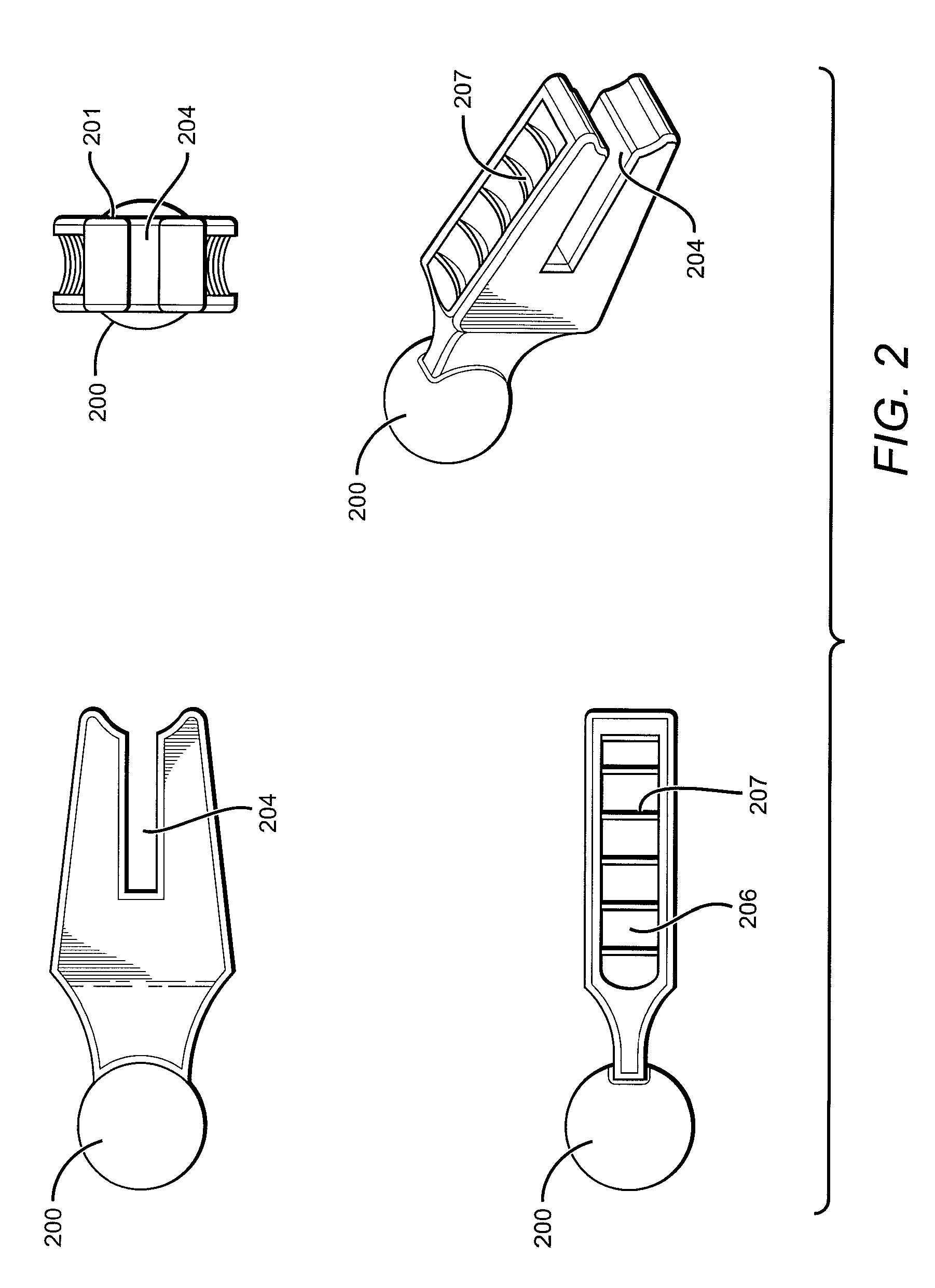Combination bite block, tongue depressor/retractor and airway
a technology of tongue depressor and airway, which is applied in the field of airways and bite blocks, can solve the problems of diseased or restored teeth being particularly vulnerable to injury, conventional oropharyngeal airways and combination airways/bite blocks generally suffer from significant defects
- Summary
- Abstract
- Description
- Claims
- Application Information
AI Technical Summary
Benefits of technology
Problems solved by technology
Method used
Image
Examples
Embodiment Construction
[0025]In FIG. 1, a bite block 10 generally comprises a bite block component 101 and a tongue depressor component 102. The bite block component 101 is generally wedge shaped, and is preferably made of a compressible component, sized and shaped to be inserted between the upper and lower molars on either the right or left side of the mouth. The tongue depressor component is generally ramp-shaped, with an anterior flatter portion 103 that is inserted into an insertion point 104 in the side of the bite block, and an optional posterior curved portion 105 that retracts the tongue off of the posterior pharynx when in place. FIG. 1 also shows the mating element 108, which inserts into channel 204 of the bite block component. As used herein, wedge-shaped is any shape that has a largely triangular or trapezoidal shape, and ramp-shaped is any shape that has an inclined surface.
[0026]The wedge shaped bite block has a wide anterior portion that angles down to a narrower posterior portion in such ...
PUM
 Login to View More
Login to View More Abstract
Description
Claims
Application Information
 Login to View More
Login to View More - R&D
- Intellectual Property
- Life Sciences
- Materials
- Tech Scout
- Unparalleled Data Quality
- Higher Quality Content
- 60% Fewer Hallucinations
Browse by: Latest US Patents, China's latest patents, Technical Efficacy Thesaurus, Application Domain, Technology Topic, Popular Technical Reports.
© 2025 PatSnap. All rights reserved.Legal|Privacy policy|Modern Slavery Act Transparency Statement|Sitemap|About US| Contact US: help@patsnap.com



